All-Wheel Drive (AWD) systems have become a defining feature of modern vehicles, especially in SUVs and crossovers, offering enhanced traction, stability, and control under a variety of driving conditions.
As more drivers seek versatility and confidence behind the wheel—whether navigating snowy winter roads, muddy off-road trails, or wet city streets—AWD has emerged as a key selling point for many automotive brands.
Unlike traditional two-wheel-drive setups, AWD systems distribute power to all four wheels either full-time or on-demand, improving grip and reducing the chances of getting stuck or losing control. This has made AWD increasingly popular not only among enthusiasts but also among everyday commuters who want an extra layer of safety and capability.
Despite its widespread appeal and technical advantages, AWD technology is far from perfect. Different manufacturers implement AWD systems in varying ways, combining mechanical parts, electronic controls, and hydraulic components in increasingly complex assemblies.
While this sophistication can lead to better performance and efficiency, it also introduces multiple potential points of failure. Some AWD systems are renowned for their robustness, reliability, and longevity, seamlessly delivering traction for years without significant problems.
Others, however, are infamous for recurring issues such as fluid leaks, grinding noises, failed actuators, and complete drivetrain breakdowns, which can frustrate owners and lead to costly repairs.
Understanding which AWD systems have proven themselves reliable and which have developed reputations for trouble is essential for prospective buyers, current owners, and automotive enthusiasts. Reliability in AWD components affects not only driving performance but also safety, maintenance costs, and overall ownership satisfaction.
Vehicles with well-engineered and durable AWD systems tend to hold their value better and require fewer unplanned repairs. Conversely, AWD systems prone to leaks or mechanical failures can become financial burdens and erode confidence in the vehicle’s capabilities.
In this article, we will explore two distinct groups of AWD-equipped vehicles: five that have earned strong reputations for reliability and five that frequently suffer from leaks, grinding noises, and system failures. This dichotomy highlights how engineering decisions, component quality, and maintenance practices influence AWD performance and longevity.
The reliable AWD vehicles demonstrate how simplicity, quality materials, and smart electronic integration can deliver dependable all-weather and all-terrain capability. The problematic vehicles, on the other hand, illustrate the risks of complex, delicate, or poorly maintained systems and the real-world consequences of ignoring early warning signs.
By diving into specific makes and models, we will shed light on the technical aspects behind these AWD success stories and failures. From transfer case designs and differential seals to electronic actuators and fluid maintenance, each vehicle tells a story about how AWD can either enhance or hinder the driving experience.
Whether you are shopping for a new AWD vehicle, considering a used purchase, or simply interested in automotive engineering, understanding these common issues and triumphs can help you make informed decisions.
Ultimately, AWD systems are invaluable for improving traction and safety, but they require proper design, quality parts, and regular upkeep to live up to their promise. Knowing which AWD cars stand out as reliable choices and which tend to develop problems empowers drivers to avoid unexpected repairs and enjoy their vehicles with confidence.
Let’s begin by examining five AWD vehicles that consistently deliver dependable performance and then contrast those with five AWD models that have a documented history of leaks, grinding, and failures.
Also Read: 5 Cars That Don’t Need Repairs and 5 That Live at the Mechanic
5 Reliable AWD Cars
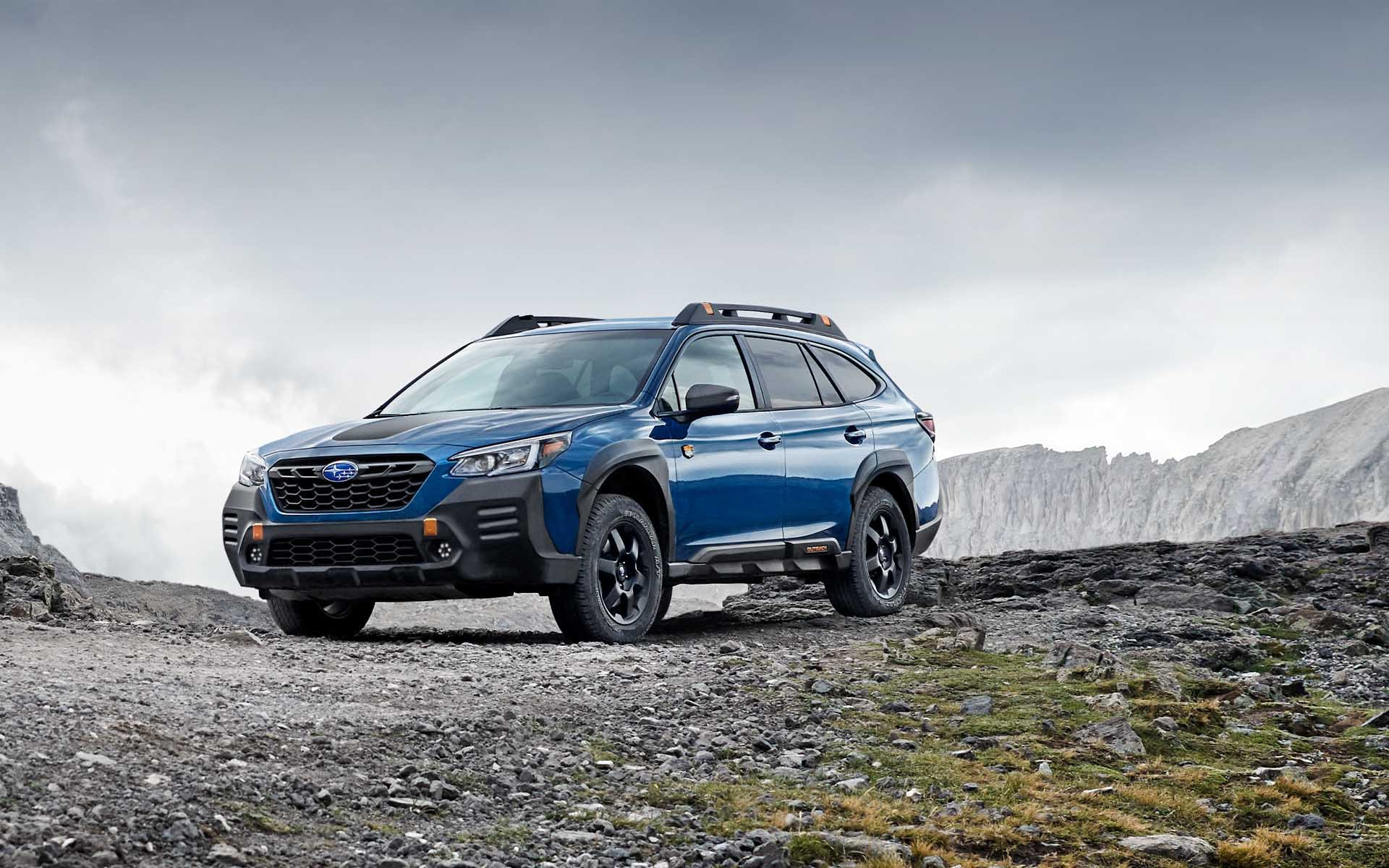
1. Subaru Outback
The Subaru Outback is widely recognized as a quintessential example of reliable all-wheel drive technology, especially appreciated by drivers who contend with challenging weather and road conditions on a regular basis.
The core of Subaru’s AWD success lies in its unique symmetrical all-wheel-drive system, which delivers power to all four wheels simultaneously via a mechanically balanced layout.
Unlike many AWD systems that rely on complex electronic sensors and clutches to switch power between the front and rear axles, Subaru’s design maintains constant power delivery to all wheels, reducing delays or unexpected changes in traction.
This continuous engagement enhances vehicle stability and driver confidence, particularly on snow-covered roads, wet pavement, or uneven terrain.
The symmetrical setup also aids in maintaining a balanced weight distribution, contributing not only to improved grip but also to the Outback’s overall composure and handling finesse. This mechanical simplicity, paired with rugged engineering, minimizes the likelihood of electronic failures or expensive component replacements that plague more intricate AWD designs.
Beyond its impressive drivetrain, the Outback stands out for its practical versatility and durability. Its higher-than-average ground clearance, which typically ranges around 8.7 inches depending on the model year, complements the AWD system to enable light off-roading and better navigation through rough conditions like gravel paths or snowy drives.
The cabin’s spaciousness and ergonomic design make it appealing for families, outdoor enthusiasts, and daily commuters alike, offering ample cargo room for gear and a comfortable ride on long journeys. Subaru has also consistently invested in boxer engine technology, which pairs well with the AWD system due to its low center of gravity and compact packaging.
These engines, while requiring routine care such as valve adjustments and oil changes, have earned a reputation for longevity and dependability. Importantly, Subaru’s commitment to engineering their AWD system in-house means better integration with the rest of the vehicle, resulting in fewer unanticipated failures and a proven track record of reliability.
Maintenance on the Subaru Outback’s AWD system tends to be straightforward and cost-effective relative to other AWD systems. Regular inspections of differential fluids and transfer case lubrication, along with timely replacement of worn tires, help keep the drivetrain operating smoothly.
Owners benefit from Subaru’s reputation for strong aftermarket support and a passionate enthusiast community, making it easier to source parts and service knowledge. Additionally, Subaru’s AWD system performs exceptionally well in cold climates and has been repeatedly tested in severe weather conditions, earning it high marks from consumers and automotive experts alike.
The vehicle’s ability to maintain traction and control without demanding high-maintenance interventions makes it a compelling choice for those seeking peace of mind behind the wheel year-round. Whether navigating mountain passes, rural backroads, or urban streets slick with rain, the Outback consistently delivers AWD reliability that stands the test of time and mileage.
Ultimately, the Subaru Outback’s combination of continuous symmetrical AWD, balanced chassis, and durable components cements its status as a reliable, practical, and widely respected AWD vehicle. It is a car that appeals not only to those in harsh climates but also to anyone who values a low-stress ownership experience and proven mechanical integrity.
The Outback’s long-standing presence in the AWD market and its enthusiastic following underscore Subaru’s success in crafting an AWD system that works exceptionally well without the pitfalls seen in other brands’ more complicated or less robust drivetrains.
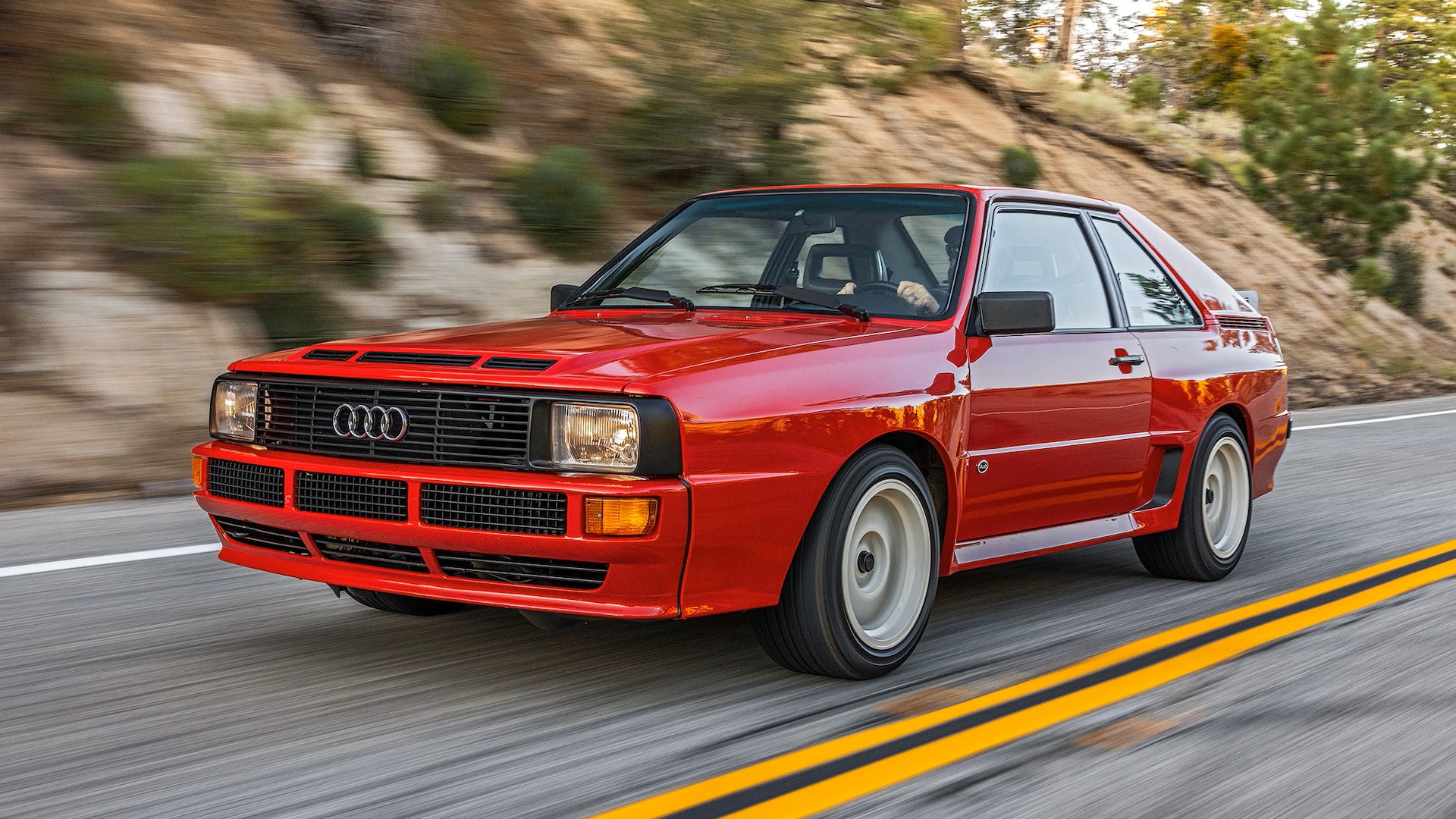
2. Audi Quattro Models
Audi’s Quattro system is arguably one of the most iconic AWD technologies ever developed, with a legacy that stretches back over four decades. The name “Quattro” has become synonymous with precision, performance, and confidence in challenging driving conditions, helping to redefine what AWD can achieve in the luxury and sports car segments.
At the heart of many Quattro systems is the renowned Torsen (torque-sensing) center differential, which uses mechanical gears to automatically distribute torque between the front and rear axles based on traction demands.
Unlike purely electronic or clutch-based AWD systems, the Torsen differential provides a highly responsive, seamless, and reliable transfer of power, enabling drivers to push their vehicles with confidence on wet roads, gravel, or even light snow.
The engineering precision behind the Quattro system means that it offers a unique blend of dynamic performance and everyday practicality, allowing drivers to experience both sporty handling and peace of mind in adverse conditions.
Modern Quattro variants have evolved to include sophisticated electronic controls that can adapt torque distribution dynamically while still relying on the robust mechanical foundation of the Torsen or similar differentials. This hybrid approach improves responsiveness and fuel efficiency without compromising the mechanical reliability that Audi has championed for years.
Because Quattro systems are integral to many Audi models — from sedans like the A4 and A6 to SUVs like the Q5 and Q7 — the AWD system has been refined across multiple platforms, with countless miles of real-world testing and continuous improvements.
Audi’s commitment to high-quality materials, precision manufacturing, and rigorous quality control means that Quattro-equipped vehicles often avoid the frequent leaks, grinding noises, or premature failures seen in less engineered AWD systems. Instead, owners benefit from a drivetrain that delivers consistent power transfer and robust durability when serviced according to manufacturer recommendations.
The luxury positioning of Audi also ensures that routine maintenance of the Quattro system, while not inexpensive, tends to be performed diligently, further contributing to the system’s longevity.
Dealers and specialized mechanics are well-versed in diagnosing and maintaining Quattro components, which include center differentials, transfer cases, and axle assemblies, all designed to function smoothly under varied driving scenarios.
Audi’s AWD system also integrates seamlessly with advanced electronic stability and traction control systems, which assist the AWD drivetrain in optimizing grip and minimizing wheel slip without placing excessive mechanical strain on components.
This synergy between mechanical hardware and electronic controls has been a key factor in Quattro’s lasting success and widespread admiration.
Overall, Audi Quattro models exemplify how AWD technology can be engineered for longevity, driver engagement, and all-weather capability simultaneously.
The blend of mechanical sophistication, robust design, and continuous refinement means that Quattro-equipped vehicles provide some of the most reliable AWD experiences available, especially when compared to other luxury brands that rely heavily on electronically actuated systems prone to failure.
For those who desire a dependable AWD car that delivers thrilling performance without sacrificing reliability, Audi’s Quattro lineup remains a top choice.
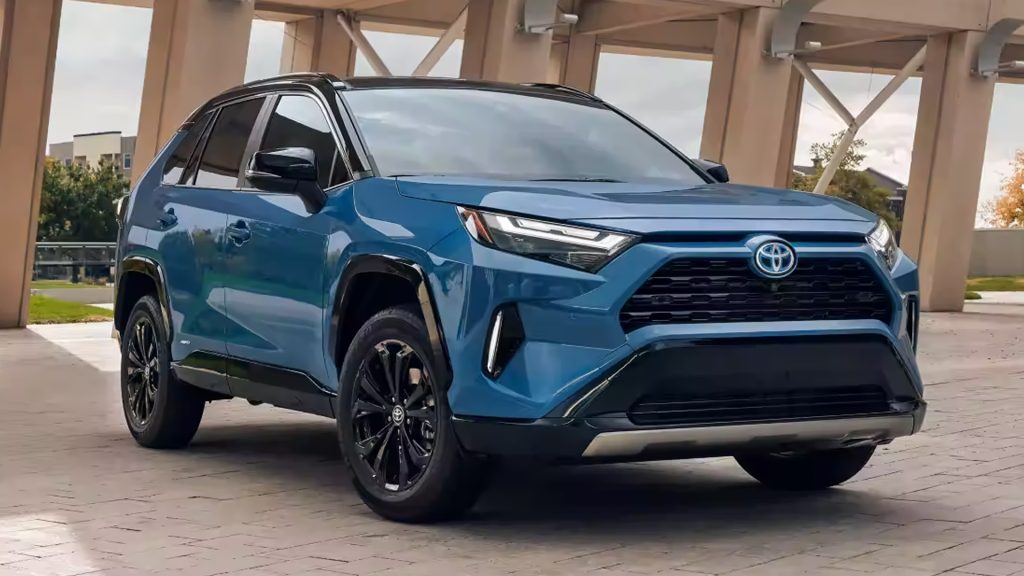
3. Toyota RAV4 AWD
The Toyota RAV4 is one of the world’s most popular compact SUVs, and its AWD system plays a major role in its broad appeal. Toyota’s approach to AWD in the RAV4 is grounded in simplicity, efficiency, and real-world utility.
Unlike full-time AWD systems, the RAV4 typically employs an on-demand AWD setup that primarily drives the front wheels under normal conditions and automatically engages the rear wheels when sensors detect slip or loss of traction.
This selective engagement reduces mechanical wear, improves fuel economy, and simplifies the drivetrain compared to permanent AWD systems that continuously distribute power to all wheels.
Toyota’s AWD design is well-regarded for being both robust and low-maintenance, with fewer components that are prone to premature failure or leaks, which can be an issue in more complex AWD configurations.
The mechanical components within the RAV4’s AWD system, including its transfer case and rear differential, are designed with Toyota’s hallmark attention to reliability and durability. Over multiple generations, Toyota has refined the system’s control logic and hardware, improving its responsiveness and smoothness while reducing mechanical stress.
Additionally, the RAV4’s AWD system is engineered to seamlessly integrate with traction control and stability control electronics, enhancing vehicle stability without the driver noticing significant shifts or delays. This thoughtful engineering reduces the likelihood of drivetrain grinding noises or jerky transitions, which are common complaints in less mature AWD systems.
Many owners praise the RAV4 for its confident grip on wet roads and light off-road surfaces, making it a versatile vehicle suitable for both urban commuting and weekend adventures.
Toyota’s commitment to durability extends beyond the AWD system itself. The RAV4 is built on a sturdy platform, often employing corrosion-resistant materials and robust seals that prevent leaks in the transfer case and differentials.
This focus on sealing integrity is a key factor in the vehicle’s AWD reliability, helping prevent the fluid leaks that can cause catastrophic damage in less well-engineered vehicles. Regular maintenance on the RAV4 AWD system is straightforward, typically involving fluid checks and replacements at recommended intervals, which most owners find to be manageable and affordable.
Beyond mechanical reliability, the RAV4’s AWD system also contributes to the vehicle’s strong resale value and consumer trust. Toyota’s reputation for building long-lasting vehicles means that used RAV4s with AWD are often sought after by buyers who want a dependable crossover without the risk of frequent drivetrain repairs.
Its AWD system strikes an ideal balance between capability and simplicity, making it a favorite among those who want confidence in slippery conditions without the complications of heavy-duty AWD systems that can be costly and finicky to maintain.
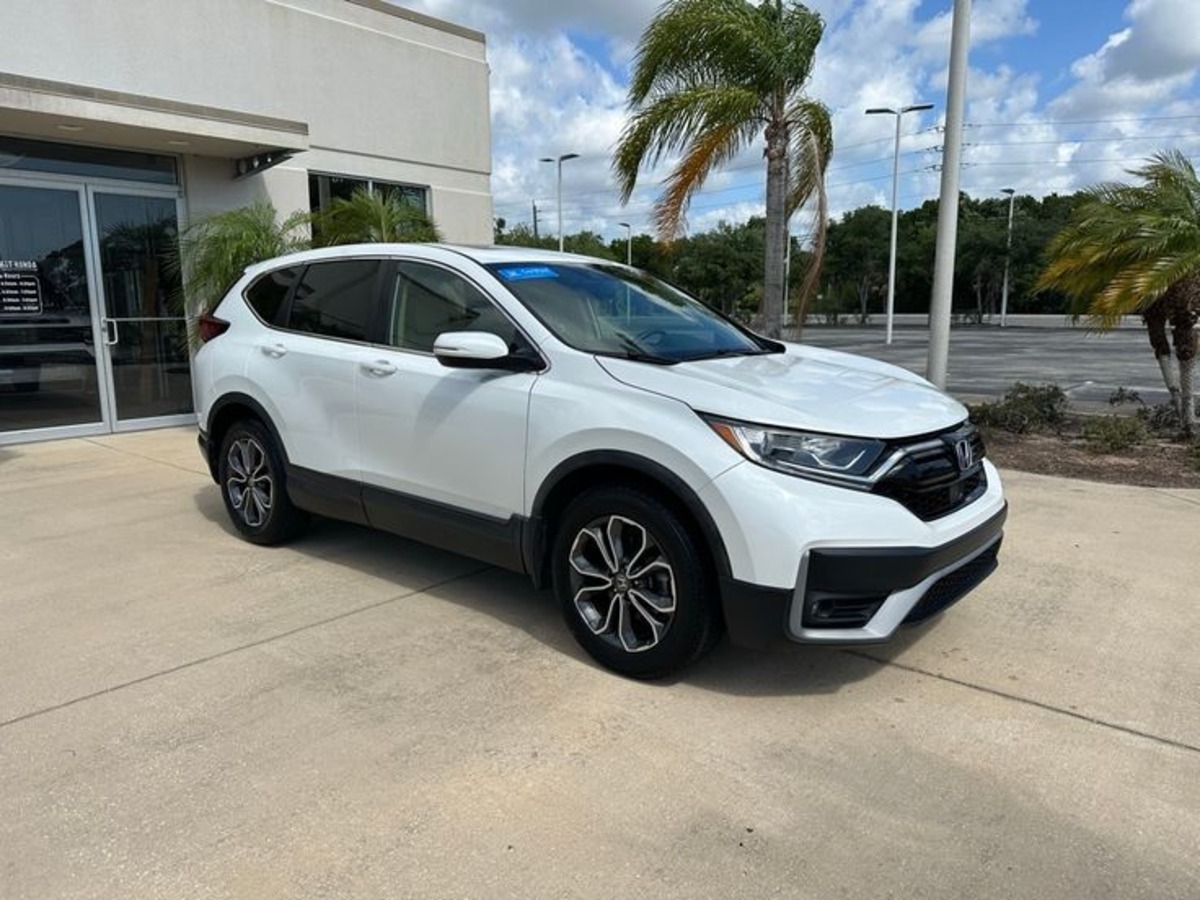
4. Honda CR-V AWD
The Honda CR-V is another compact SUV that has gained widespread acclaim for its reliable AWD system, contributing significantly to its status as one of the best-selling vehicles in its segment.
Honda’s Real Time AWD system is fundamentally an on-demand setup, designed to maximize fuel efficiency by operating primarily as a front-wheel-drive vehicle and only engaging the rear wheels when sensors detect front-wheel slippage.
This setup uses a hydraulic clutch mechanism to smoothly transfer power rearward, providing additional traction only when needed. The design reduces mechanical wear, fuel consumption, and complexity compared to full-time AWD systems that run all four wheels continuously. It also means fewer opportunities for leaks or component failures that can plague more intricate AWD designs.
Honda’s AWD system in the CR-V is lauded for its smooth, quiet operation, which adds to the vehicle’s reputation for comfort and refinement. The clutch engagement is generally seamless, and transitions between two-wheel and all-wheel drive are subtle enough that drivers rarely notice them unless conditions demand it.
This smooth engagement reduces mechanical stress and wear on drivetrain components, which translates to longer service life and fewer issues with grinding noises or mechanical failure. In addition, Honda’s emphasis on robust engineering and quality control means that seals, bearings, and other drivetrain elements are built to withstand the rigors of varied driving conditions without developing leaks or other common AWD problems.
The CR-V also benefits from Honda’s broader reputation for engineering vehicles that require minimal maintenance and deliver dependable performance over high mileage. When it comes to the AWD system, routine service involves regular fluid changes and inspections, but the system itself does not demand extensive repairs or complicated diagnostics in most cases.
The CR-V’s AWD components are designed to be durable and replaceable without exorbitant costs, making ownership more affordable over the vehicle’s lifespan. This is especially important in the SUV segment, where consumers expect reliable traction control and all-weather capability without the trade-off of increased mechanical risk or repair bills.
Finally, the CR-V’s AWD system’s integration with Honda’s overall vehicle platform, including traction control and stability assist technologies, enhances the vehicle’s safety profile and drivability in slippery or challenging conditions. It gives drivers confidence in rain, snow, or loose gravel, making the CR-V a practical and dependable choice for families, commuters, and adventure seekers alike. Its AWD reliability is a core reason why the CR-V remains a perennial favorite among compact SUVs.
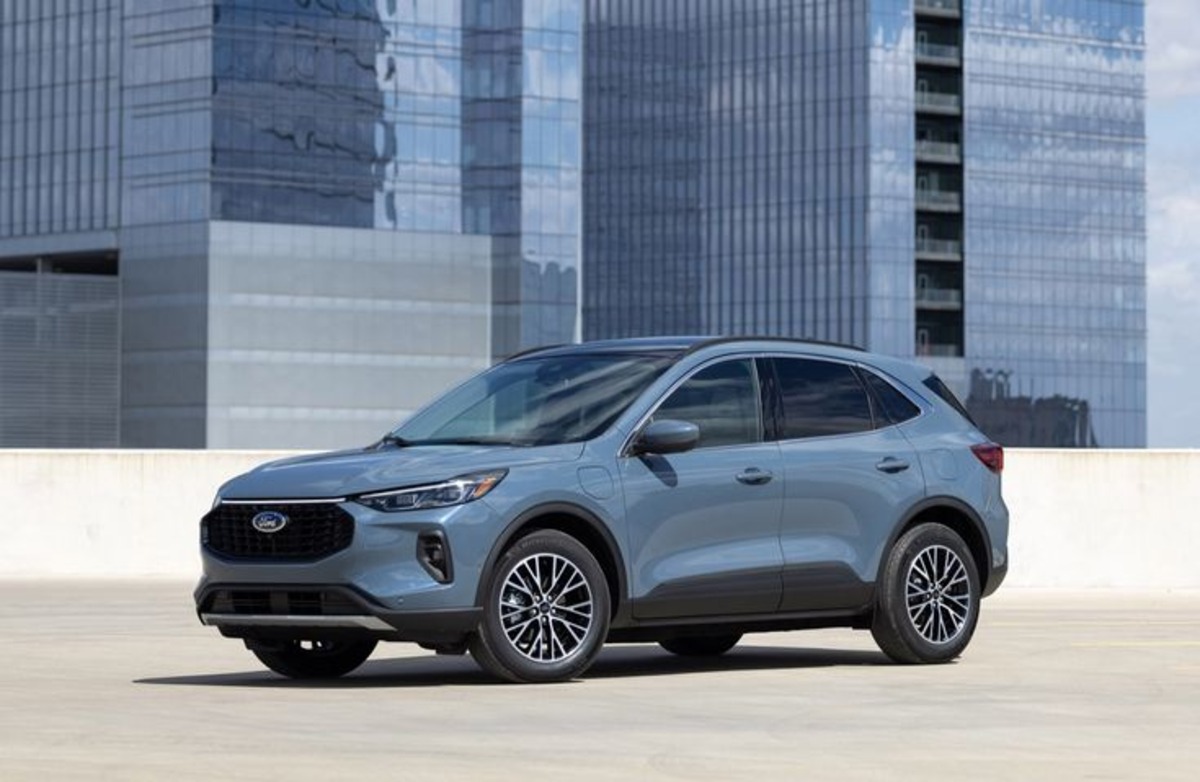
5. Ford Escape AWD
The Ford Escape has made significant strides over the years in refining its AWD system, elevating it to a position of solid reliability and consumer confidence within the compact SUV market. The AWD technology in the Escape is primarily an intelligent, on-demand system that activates the rear wheels automatically upon detecting front-wheel slippage.
This approach reduces unnecessary drivetrain wear and improves fuel efficiency compared to full-time AWD systems, which is a key consideration for consumers seeking a balance between capability and economy.
Ford’s engineers have continually enhanced the system’s responsiveness and durability through iterative improvements in hardware and software, resulting in a system that feels both confident and smooth in everyday driving scenarios.
Newer generations of the Escape benefit from advanced AWD components and control algorithms that better anticipate traction loss and distribute torque more precisely. This reduces the likelihood of drivetrain noises such as grinding or clunking, which were sometimes reported in earlier models.
The system’s design incorporates durable materials and well-sealed transfer cases, minimizing the chances of fluid leaks that often plague less well-engineered AWD systems. Ford’s investment in refining the Escape’s AWD also extends to improved integration with electronic stability control and traction assist systems, which work together to maintain optimum grip and control with minimal driver input.
Owners appreciate the Escape’s AWD system for providing a secure and composed ride in a variety of road conditions, including wet pavement, light snow, and unpaved surfaces. The vehicle’s overall build quality, combined with the reliable AWD drivetrain, translates into fewer visits to the mechanic for drivetrain-related issues.
Maintenance remains manageable and affordable, typically involving routine fluid checks and occasional servicing of AWD components. This predictability in upkeep and repairs helps the Escape maintain a strong reputation for value and reliability within its class.
Moreover, the Ford Escape AWD system’s evolution reflects a broader trend in the industry toward smarter, more efficient AWD solutions that do not sacrifice durability. Ford has managed to strike a balance between complexity and simplicity, ensuring that the AWD system performs its job effectively without introducing unnecessary points of failure.
For buyers seeking an AWD crossover that combines everyday usability, capable traction, and dependable mechanics, the Escape stands out as a solid and increasingly refined option in a crowded marketplace.
5 AWD Cars That Constantly Leak, Grind, or Fail
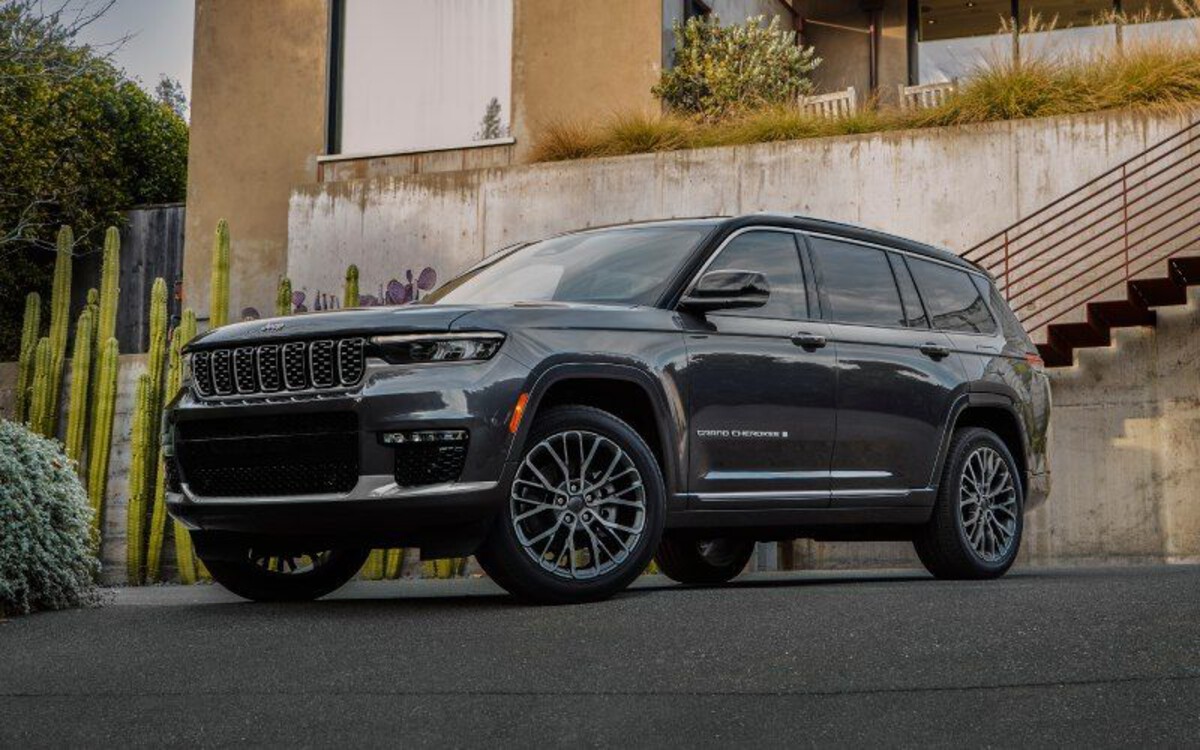
1. Jeep Grand Cherokee
The Jeep Grand Cherokee has long been a popular choice among SUV enthusiasts, prized for its rugged off-road capabilities and distinctive American muscle styling. However, despite these strengths, certain Grand Cherokee models—particularly those from the mid-2000s to early 2010s—have earned a less flattering reputation for AWD system issues that manifest as leaks, grinding noises, and premature failures.
One of the most notorious problem areas involves the transfer case and its seals, which are prone to deteriorating over time, especially when exposed to rough terrain and moisture infiltration.
Fluid leaks from these seals often go unnoticed until significant damage occurs, such as contamination of the differential or inadequate lubrication that leads to accelerated wear of gears and bearings. These leaks not only reduce the effectiveness of the AWD system but can also create safety hazards if left unaddressed.
Compounding the leak issues, owners frequently report a grinding or whining noise emanating from the transfer case or front differential when the AWD system is engaged. This noise is often indicative of worn bearings or damaged gears, and in many cases, results from the transfer case operating with low or contaminated fluid.
The design of the Grand Cherokee’s AWD system, which uses an electronically controlled transfer case, can be more susceptible to failures compared to simpler mechanical systems.
Electronic actuators and sensors sometimes malfunction, causing the system to improperly engage or disengage AWD, leading to drivetrain strain or even component failure. The integration of complex electronics adds layers of potential failure points, which can turn a relatively straightforward AWD repair into an expensive ordeal.
Furthermore, the Jeep Grand Cherokee’s AWD system components tend to fail prematurely relative to competitors, often requiring costly repairs or full transfer case replacements.
The parts involved—such as the actuator motor, chain drives within the transfer case, and differential assemblies—have been known to degrade faster than expected, particularly in vehicles that see frequent off-road use or are not meticulously maintained.
Owner forums and reliability studies consistently highlight these issues, with many drivers lamenting the significant downtime and repair expenses required to keep their AWD systems functional. Moreover, the complex design means that diagnosing the root cause of AWD problems can be challenging and often requires specialized knowledge and tools, adding to labor costs and repair frustration.
Overall, while the Jeep Grand Cherokee remains a capable and beloved SUV for many, its AWD system reliability leaves much to be desired in certain model years. The combination of seal leaks, grinding noises, electronic actuator failures, and premature drivetrain wear has tarnished its reputation among AWD enthusiasts who expect rugged reliability.
For prospective buyers or current owners, diligent maintenance, early leak detection, and prompt servicing are critical to avoiding severe AWD issues. Those who intend to use the vehicle extensively off-road or in harsh conditions should be prepared for potentially expensive AWD repairs or consider aftermarket upgrades that address common weak points in the system.
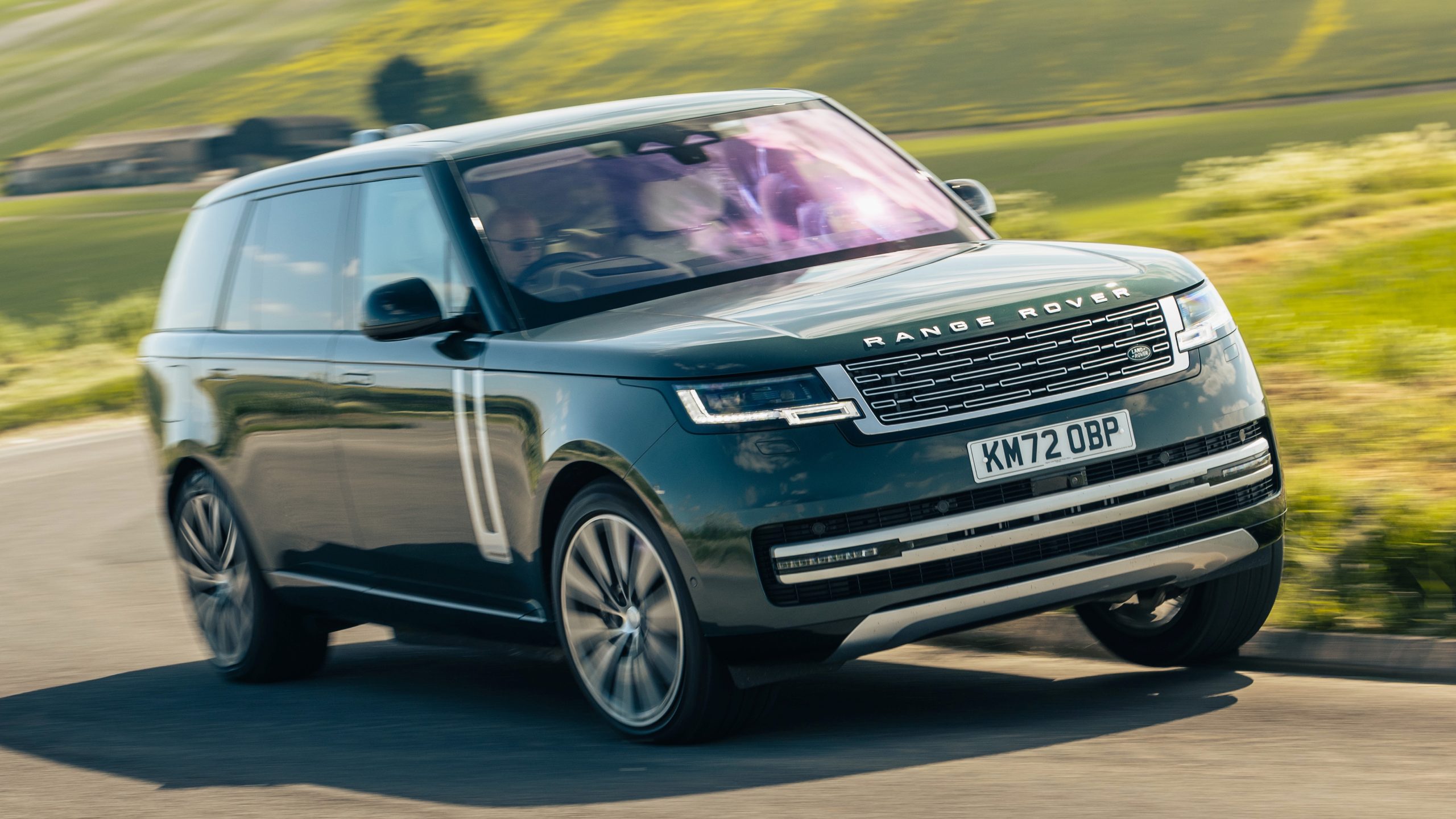
2. Land Rover Range Rover
Land Rover has built a legacy on luxury SUVs that offer remarkable off-road prowess, but the Range Rover models—especially those manufactured in the early 2000s through the early 2010s—have been plagued with AWD-related reliability problems that cause headaches for many owners.
Central to these problems is the sophisticated but notoriously fragile full-time AWD system, which combines multiple electronic differentials, a complex transfer case, and an array of sensors and actuators to deliver power to all four wheels.
While the system is engineered for superior traction and off-road capability, it is also prone to frequent leaks, component failures, and grinding noises, often stemming from faulty seals, worn gear teeth, or degraded electronic components.
The transfer case and differential assemblies are especially vulnerable, with oil leaks compromising lubrication and accelerating wear, which can ultimately lead to catastrophic mechanical failure.
One of the biggest issues with Range Rover AWD systems is the frequent failure of the transfer case motor and its associated actuator mechanism. These parts are responsible for controlling the engagement of the AWD system, and when they malfunction, the vehicle may be stuck in either two-wheel drive or full AWD mode, resulting in drivability problems, excessive wear, or reduced fuel economy.
The complexity of the electronic controls, combined with the high number of moving parts and sensors, means that diagnosing AWD system problems on the Range Rover can be an expensive and time-consuming process.
Owners often report recurring problems where repairs temporarily solve symptoms but underlying electronic glitches cause intermittent AWD failures, resulting in persistent uncertainty and inconvenience.
Leaks are another significant problem with Range Rover AWDs, as the transfer case and differential seals are prone to failure due to aging materials, exposure to off-road conditions, or insufficient maintenance. These leaks not only reduce the effectiveness of the AWD system but can also lead to contamination of gears and bearings, increasing the likelihood of grinding noises and eventual drivetrain failure.
Moreover, the cost of parts and labor for Range Rover maintenance tends to be considerably higher than for more mainstream brands, compounding the frustration for owners when AWD problems arise.
The combination of high repair costs, difficult diagnostics, and recurring issues has made Range Rover AWD ownership a gamble, with many owners expressing dissatisfaction despite the vehicle’s undeniable capability and luxury appeal.
In essence, while the Range Rover AWD system is technically impressive and offers excellent traction and off-road performance, its reliability record leaves much to be desired. The frequent occurrence of leaks, grinding noises, actuator failures, and complex electronic malfunctions creates a pattern of costly repairs and inconvenience.
Prospective buyers need to weigh these risks carefully and consider extensive pre-purchase inspections and maintenance plans if they decide to own one. For current owners, staying vigilant about AWD system fluid levels, promptly addressing leaks, and using experienced Land Rover specialists for repairs are crucial strategies to mitigate the potential for major drivetrain failures.

3. Mitsubishi Outlander AWD
The Mitsubishi Outlander, a popular compact SUV in many global markets, unfortunately carries a mixed reputation when it comes to the reliability of its AWD system. Particularly in models produced during the early 2010s, the AWD drivetrain has been a source of persistent problems, including leaks, grinding noises, and occasional complete failures.
Unlike some competitors that employ traditional mechanical or electronic AWD systems, the Outlander often uses a system incorporating multiple clutch packs and hydraulic actuators to shift power between the front and rear wheels. While this design offers efficiency benefits and improved traction control, it also introduces more points of potential failure and complexity, which can lead to troublesome maintenance issues for owners.
A common complaint among Outlander AWD owners involves leaks from the transfer case or rear differential seals, which tend to degrade prematurely due to poor seal materials or design flaws. These leaks allow lubricants to escape, causing insufficient lubrication and accelerated wear on internal gears and bearings.
As these components degrade, grinding or whining noises often develop, especially under load or during turns. Unfortunately, the failure to catch leaks early can lead to severe damage requiring costly overhauls or replacement of transfer case components.
Furthermore, some Outlander models are known to suffer from actuator failures that impair the AWD system’s ability to engage or disengage rear-wheel drive properly, leading to drivability problems such as hesitation, jerking, or inconsistent power delivery.
The design complexity of Mitsubishi’s AWD system in the Outlander also means that repairs can be challenging, often requiring specialized tools and diagnostic equipment that not all service centers possess. This situation leaves many owners reliant on dealership service, where labor costs tend to be high.
Moreover, replacement parts for the transfer case and AWD components are sometimes scarce or expensive, complicating repairs further. While Mitsubishi has addressed some of these issues in later models with updated components and improved sealing materials, the legacy of early AWD problems continues to affect the vehicle’s reputation for reliability.
In summary, the Mitsubishi Outlander AWD system from certain model years is a problematic drivetrain that suffers from leaks, grinding noises, and occasional component failures. These issues largely stem from design choices that favor efficiency and traction control complexity at the expense of long-term durability.
For buyers considering an Outlander with AWD, it is essential to research the specific model year thoroughly, prioritize vehicles with well-documented maintenance histories, and be prepared for potentially higher-than-average repair costs. Owners should remain vigilant for fluid leaks and unusual drivetrain noises to avoid costly failures.
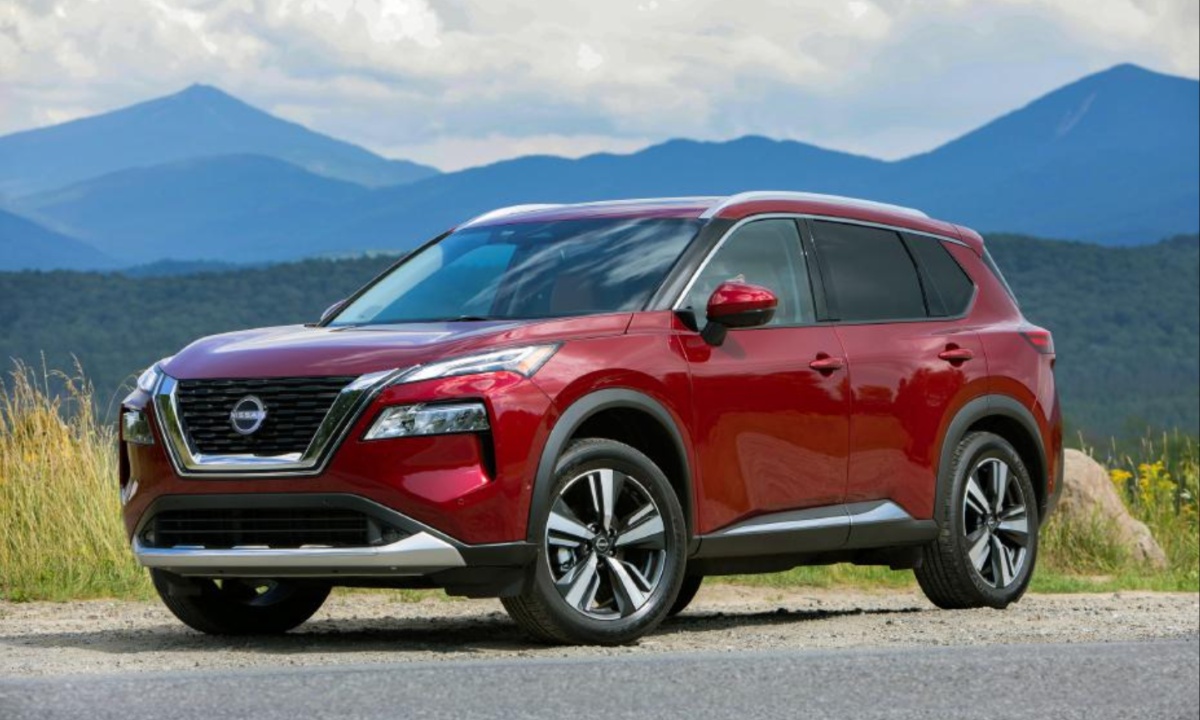
4. Nissan Rogue AWD
The Nissan Rogue is a popular compact crossover known for its fuel efficiency and comfortable ride, but when it comes to its AWD system, it has faced recurring reliability issues that have frustrated many owners. The Rogue’s AWD system typically employs an electronically controlled on-demand setup that shifts torque to the rear wheels when slippage is detected at the front.
While this design optimizes fuel economy and everyday drivability, the system’s complexity and some inherent design flaws have led to persistent leaks, grinding noises, and premature failures, especially in earlier models from the late 2000s and early 2010s.
A key weak point in the Rogue’s AWD system is the transfer case, which has been known to develop seal leaks that result in fluid loss and internal component wear.
Once fluid begins leaking from the transfer case or rear differential, the chances of grinding noises or gear damage increase significantly. Owners frequently report that the AWD system makes unpleasant noises during acceleration or cornering, which often indicates worn bearings, damaged gear teeth, or compromised lubrication.
In some cases, the transfer case motor or its associated sensors may fail, causing the AWD system to become unresponsive or stuck in a particular mode.
These failures not only reduce the vehicle’s ability to maintain traction but can also cause drivability issues and increased wear on other drivetrain components, escalating repair costs. Diagnosing these problems can be tricky since the symptoms may mimic other drivetrain or transmission issues, leading to misdiagnosis or delayed repairs.
Nissan’s approach to the Rogue’s AWD system has involved a complex interplay of mechanical parts and electronic controls, but some of these components have been prone to early failure due to insufficient sealing, less robust materials, or software glitches. The repair process is often complicated by the need to source specific transfer case seals, actuators, and sensors that may not be readily available at all repair shops.
Additionally, the labor involved in replacing or repairing AWD components on the Rogue can be extensive and costly, which has been a source of dissatisfaction for many owners. Although Nissan has made improvements in later model years to address some of these issues, the overall AWD reliability of the Rogue still falls short compared to some competitors.
In conclusion, the Nissan Rogue AWD system has experienced persistent reliability challenges centered around leaks, grinding noises, and transfer case failures. These issues can lead to costly repairs and reduced confidence in the vehicle’s ability to provide consistent traction.
Prospective buyers and current owners should be aware of these common problems and take proactive steps such as frequent fluid inspections and early intervention upon detecting noises or leaks. Choosing later model years or vehicles with documented AWD system repairs may help mitigate some of the risk associated with Rogue AWD ownership.
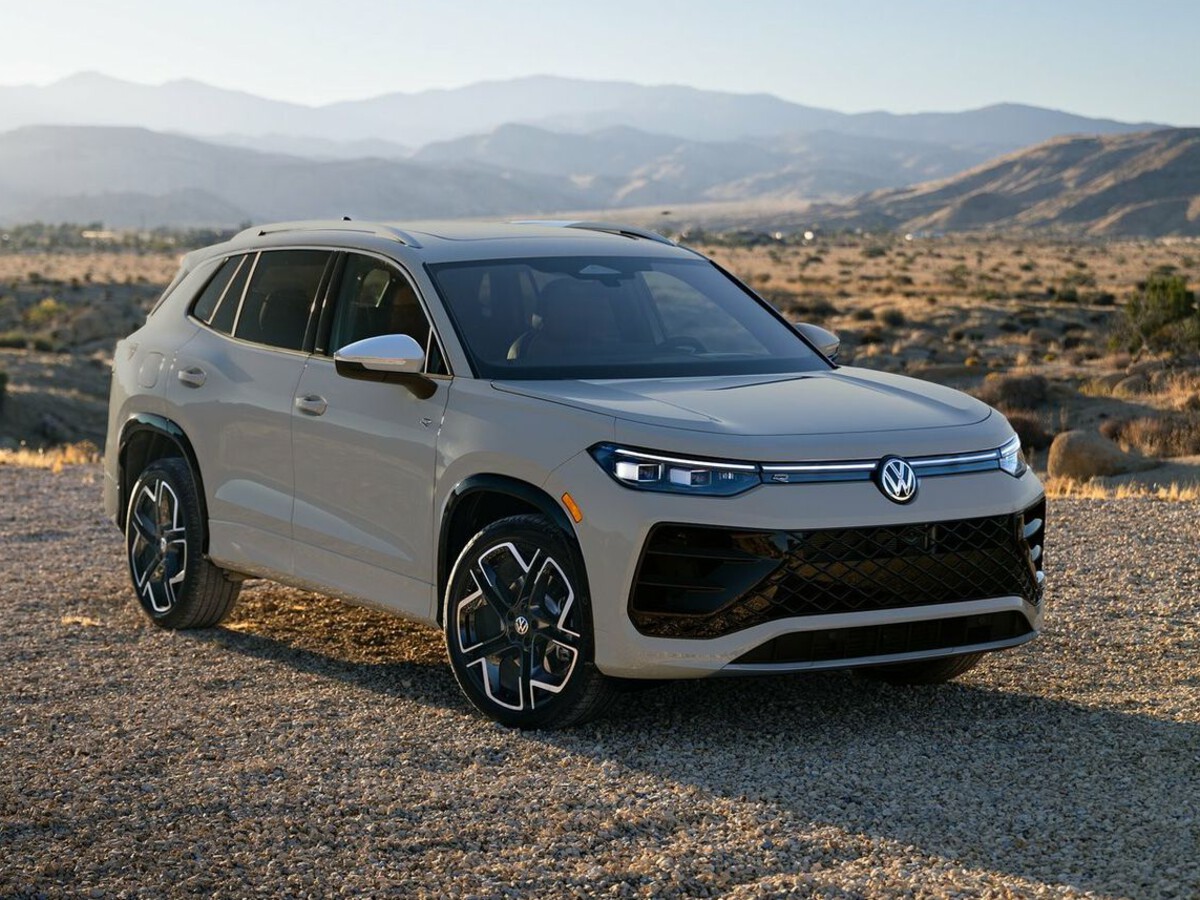
5. Volkswagen Tiguan AWD
The Volkswagen Tiguan offers European styling, solid driving dynamics, and a technologically advanced AWD system known as 4Motion. Despite these appealing qualities, Tiguan owners, particularly those with models from the early 2010s, have encountered recurring issues with their AWD drivetrains that undermine the vehicle’s reliability reputation.
Volkswagen’s 4Motion system utilizes a Haldex-type coupling, which is an electronically controlled multi-plate clutch that transfers torque between the front and rear axles as needed.
While this design is intended to provide efficient power distribution and fuel savings, it is also notorious for certain maintenance challenges, including frequent leaks, noisy operation, and clutch pack wear that can cause grinding sounds or AWD failure.
A common problem with the Tiguan’s AWD system involves leaks from the Haldex coupling seals, which can degrade or rupture over time due to heat and mechanical stress. When these seals fail, transmission fluid or AWD coupling fluid can leak out, leading to inadequate lubrication and overheating of the clutch pack inside the coupling.
This wear causes slipping, grinding noises, and eventually a loss of AWD functionality. The Haldex unit’s sensitivity to fluid condition means that neglecting timely fluid changes can dramatically shorten its lifespan.
Unfortunately, many owners and even some service shops underestimate the importance of regular maintenance on this component, which has resulted in premature failures and costly repairs.
Beyond the sealing issues, the Haldex system’s electronically controlled clutch can develop problems with its control module, sensors, or actuators. These electronic failures can cause erratic torque transfer behavior, AWD warning lights, or complete system shutdowns.
Diagnosing and repairing these faults requires specialized diagnostic tools and expertise, which can lead to expensive dealership visits or specialized repairs that burden owners financially. Additionally, replacement of the Haldex unit or clutch packs can be costly and labor-intensive, contributing to the Tiguan’s reputation for AWD reliability woes.
In summary, while the Volkswagen Tiguan’s 4Motion AWD system offers advanced traction control and driving dynamics, it comes with a history of leaks, grinding noises, and component failures that can significantly diminish reliability.
The system’s complexity, reliance on proper fluid maintenance, and sensitivity to seal integrity make it a challenging AWD option for owners who prioritize low-maintenance durability.
For those considering or currently owning a Tiguan, it is crucial to adhere strictly to service schedules, promptly address leaks, and seek out technicians familiar with Volkswagen’s AWD technology to avoid costly drivetrain failures.
Also Read: 5 Cars With Zero Depreciation Over 5 Years and 5 That Drop Instantly
The landscape of all-wheel-drive vehicles is diverse and complex, reflecting the wide range of engineering philosophies and market demands manufacturers face. AWD systems, while tremendously beneficial for improving traction, handling, and safety, are also a source of both praise and frustration depending on their design and execution.
This exploration into five reliable AWD vehicles and five that regularly leak, grind, or fail underscores the importance of thoughtful engineering, quality materials, and attentive maintenance in determining long-term drivetrain success.
Reliable AWD systems tend to share several common characteristics: they use robust mechanical components designed to withstand wear and tear; they incorporate electronic controls that complement rather than complicate the system; and they emphasize proper sealing and fluid management to prevent leaks and contamination.
Vehicles like the Subaru Outback, Toyota RAV4 AWD models, and Audi Quattro-equipped cars exemplify these strengths, providing owners with AWD systems that perform consistently under a variety of conditions and require relatively little intervention.
These vehicles benefit from manufacturers’ investment in extensive testing, continuous improvements, and clear maintenance guidelines, allowing drivers to enjoy confidence in their vehicle’s traction and stability without constant worry about drivetrain issues.
Conversely, AWD systems that frequently leak, grind, or fail tend to suffer from overly complex designs, fragile seals, and electronic components that can malfunction or confuse diagnostics.
Vehicles such as the Jeep Grand Cherokee, Land Rover Range Rover, and Volkswagen Tiguan 4Motion illustrate how sophisticated AWD technologies—while impressive on paper—can translate into reliability headaches in real-world usage.
Poorly designed seals lead to fluid loss, which in turn causes inadequate lubrication, component overheating, and accelerated wear. Electronic actuators and sensors, while improving control, introduce new failure points that require specialized diagnostics and costly repairs.
In these cases, owners face a double burden of expensive fixes and reduced confidence in the AWD system’s ability to deliver when it matters most.
Buyers and owners must recognize that AWD systems are not all created equal. The reliability of an AWD vehicle depends not only on the brand or model but also on the specific system’s design, manufacturing quality, and maintenance history.
Prospective buyers should conduct thorough research, including reading owner reviews, reliability reports, and consulting with knowledgeable mechanics to understand potential pitfalls. Pre-purchase inspections focused on AWD system condition can identify early signs of leaks or mechanical wear before they develop into major problems.
For current owners, proactive maintenance is paramount. Regularly checking AWD fluid levels, changing fluids according to manufacturer recommendations, and addressing any leaks or noises promptly can dramatically extend the lifespan of the AWD system.
Avoiding heavy off-road use or extreme conditions without proper maintenance can also prevent accelerated wear. When repairs are needed, seeking out specialists familiar with the specific AWD technology ensures accurate diagnosis and effective solutions, preventing repeated failures.
Looking ahead, the evolution of AWD systems continues to push boundaries with advances like torque vectoring, electronic differentials, and hybrid electric AWD configurations.
While these innovations promise improved performance and efficiency, they also add complexity that could impact long-term reliability. Manufacturers who prioritize durability, simplicity, and maintainability alongside technological advancement will likely stand out as leaders in AWD dependability.
In summary, AWD technology remains a vital feature for enhancing vehicle capability and safety, but its success hinges on solid engineering and diligent care. Understanding which vehicles have proven themselves reliable and which are prone to AWD failures allows drivers to make informed decisions that safeguard their investments and driving enjoyment.
Whether choosing a trusted AWD stalwart or navigating the challenges of more complex systems, knowledge and vigilance are the keys to unlocking the full benefits of all-wheel drive without the burden of constant leaks, grinding, or breakdowns.

